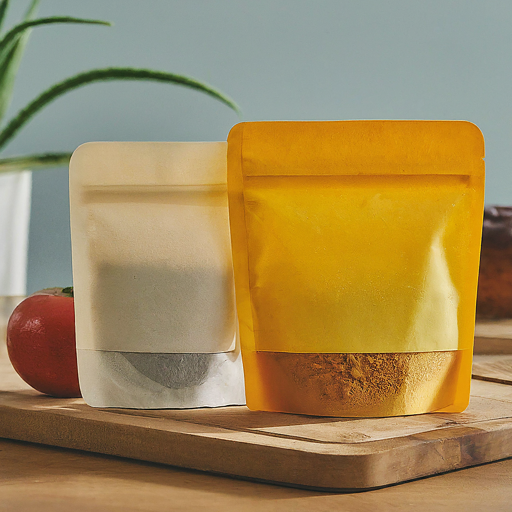Proper food storage is essential to maintaining freshness, extending shelf life, and ensuring food safety. Layered pouches have become increasingly popular for storing food due to their durability, airtight sealing, and ability to protect against moisture, light, and oxygen. In this guide, we will explore the best practices for storing food in layered pouches, offering clear and practical advice on how to maximize their effectiveness. Whether you’re storing dry goods, freeze-dried foods, or perishable items, following these guidelines will help you keep your food fresh and safe for longer periods.
Understanding Layered Pouches
Layered pouches are made up of multiple layers of materials that work together to protect the contents inside. These pouches often include layers of plastic, aluminum, and other protective materials that block light, moisture, and oxygen. The layers create a barrier that preserves the food’s flavor, texture, and nutritional value.
One of the primary advantages of using layered pouches such as custom Mylar pouches for food storage is their ability to keep out harmful elements that can lead to spoilage. Oxygen, for instance, can cause oxidation, leading to rancidity in fats and oils. Moisture can promote the growth of mold and bacteria, while light can degrade certain nutrients and alter the color and taste of food.
Proper Sealing Techniques
Sealing is crucial when storing food in layered pouches. A proper seal ensures that the pouch is airtight, keeping out oxygen, moisture, and contaminants. Without a good seal, the effectiveness of the pouch is compromised, and the food inside may spoil more quickly.
To seal a layered pouch effectively, start by ensuring the edges of the pouch are clean and free of any food particles. Use a heat sealer to close the pouch, as this method provides a strong, airtight seal. Heat sealers are available in various types, from handheld models to more advanced machines used for bulk sealing.
Selecting the Right Storage Conditions
The environment in which you store your layered pouches plays a significant role in maintaining the quality of the food inside. Proper storage conditions can prevent spoilage and extend the shelf life of your food.
First, store layered pouches in a cool, dry place. Heat can accelerate the breakdown of food, leading to loss of flavor, texture, and nutritional value. High temperatures can also weaken the materials in the pouch, making them more susceptible to tearing or puncturing. Aim to keep your storage area at a consistent temperature, ideally between 50°F and 70°F.
Next, avoid exposing the pouches to direct sunlight or other sources of UV light. UV light can degrade the protective layers in the pouch and cause the food inside to deteriorate. If possible, store the pouches in opaque containers or cabinets that block out light.
Using Oxygen Absorbers for Added Protection
Oxygen absorbers are small packets that contain iron powder, which reacts with oxygen to form iron oxide, effectively removing oxygen from the surrounding environment. These packets are an excellent addition to layered pouches, especially when storing foods that are sensitive to oxygen exposure.
When placing food in layered pouches, consider adding an oxygen absorber to further protect against spoilage. The amount of oxygen absorber you’ll need depends on the size of the pouch and the type of food being stored. For example, a 300cc oxygen absorber is typically sufficient for a one-gallon pouch of dry goods like grains or beans.
Maximizing Shelf Life with Proper Rotation
Even when using the best storage practices, it’s essential to rotate your food supplies regularly. Food rotation involves using the oldest stock first and replenishing it with new supplies. This practice ensures that your food remains fresh and minimizes waste.
When storing food in layered pouches, label each pouch with the date of storage. This simple step makes it easy to track how long the food has been stored and helps you identify which items should be used first. Consider creating a rotation schedule to ensure that no food is forgotten and left to spoil.
In addition to dating your pouches, it’s a good idea to keep an inventory of your stored food. This inventory should include the type of food, the date it was stored, and the quantity. An organized inventory allows you to manage your food supplies more efficiently and prevents the accidental use of newer items before older ones.
Utilizing Layered Pouches for Emergency Preparedness
Layered pouches are an excellent option for emergency food storage due to their durability and long shelf life. Whether you’re preparing for natural disasters, power outages, or other emergencies, having a supply of food stored in layered pouches can provide peace of mind.
When creating an emergency food supply, focus on storing a variety of foods that meet your nutritional needs. Dry goods like rice, beans, and pasta are ideal for long-term storage in layered pouches. You can also store freeze-dried meals, dehydrated fruits and vegetables, and powdered milk. These items are lightweight, easy to store, and have a long shelf life when sealed properly.
Ensure that your emergency food supply includes enough food to last at least several weeks for each person in your household. Store the pouches in a location that is easily accessible in case of an emergency, but also protected from extreme temperatures and humidity.
Importance of Monitoring Food Quality
Monitoring the quality of your stored food is vital to ensuring it remains safe to eat. Even with the best storage practices, food can sometimes spoil, so it’s important to regularly inspect your layered pouches and their contents.
Start by visually inspecting the pouches for any signs of damage, such as tears, punctures, or compromised seals. If you find any damaged pouches, use the food inside as soon as possible, or if the food appears spoiled, discard it immediately.
Next, check the appearance, smell, and texture of the food itself. If the food looks discolored, has an off smell, or has a texture that doesn’t seem right, it’s best to err on the side of caution and discard it. These could be signs of spoilage, and consuming spoiled food can lead to foodborne illnesses.
Using Layered Pouches for Specialty Foods
While layered pouches are commonly used for storing dry goods, they are also an excellent option for preserving specialty foods. Items such as coffee, spices, and teas benefit greatly from the protective qualities of layered pouches.
Coffee, for example, is sensitive to oxygen, moisture, and light, all of which can cause it to lose its flavor and aroma. Storing coffee beans or ground coffee in layered pouches with a strong oxygen barrier helps preserve its freshness for longer periods. Similarly, spices and herbs, which can quickly lose their potency when exposed to air and light, stay flavorful and aromatic when stored in layered pouches.
When storing specialty foods, consider using smaller pouches to divide the contents into manageable portions. This approach allows you to open only the amount you need while keeping the rest of the supply sealed and protected. Additionally, adding an oxygen absorber to each pouch can further extend the shelf life of these sensitive items.
Conclusion
Storing food in layered pouches is an effective way to preserve freshness, extend shelf life, and ensure food safety. By understanding the unique properties of layered pouches and following best practices, you can maximize their benefits and keep your food in optimal condition. From proper sealing techniques to selecting the right storage conditions, each step plays a crucial role in protecting your food from spoilage and contamination. Whether you’re preparing for emergencies or simply looking to store your favorite specialty foods, layered pouches offer a reliable and versatile solution for all your food storage needs.




